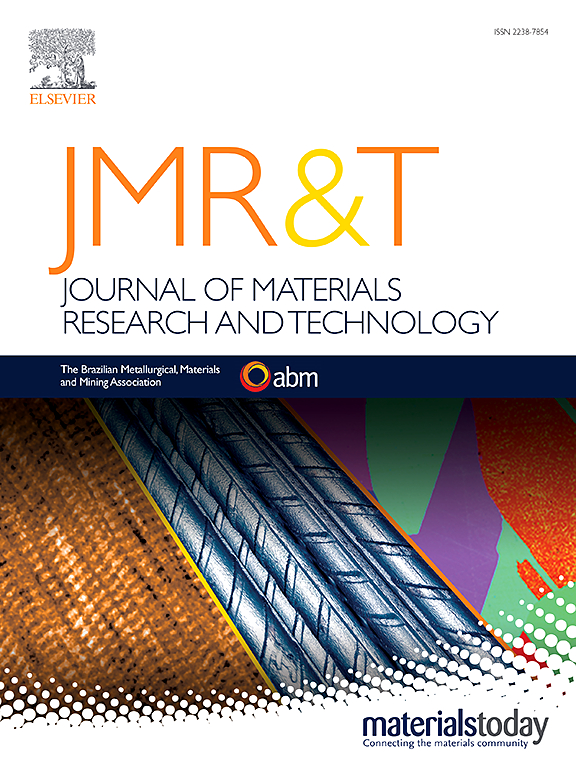PACVD法制备Ti-B-N膜时腐蚀性能的对比研究
IF 6.2
2区 材料科学
Q1 MATERIALS SCIENCE, MULTIDISCIPLINARY
Journal of Materials Research and Technology-Jmr&t
Pub Date : 2025-03-12
DOI:10.1016/j.jmrt.2025.03.097
引用次数: 0
摘要
本研究通过脉冲直流等离子体辅助化学气相沉积(PACVD)方法研究了氮化钛硼(Ti-B-N)薄膜的腐蚀特性,并将其与传统的氮化钛(TiN)和二硼化钛(TiB2)薄膜的性能进行了比较。结果表明,Ti-B-N纳米复合膜具有原子排列不均匀、无定形BN原子分布不规则的特点。在3.5 wt% NaCl溶液中电化学评价表明,浸泡96 h后,Ti-B-N膜的电荷转移电阻(Rct)为15980 Ω cm2,显著优于TiN的2755 Ω cm2和TiB2的2593 Ω cm2。Ti-B-N的腐蚀电流密度(icorr)为0.193 μA/cm2,与TiN的0.413 μA/cm2和TiB2的0.548 μA/cm2相比,Ti-B-N的耐蚀性增强。Ti-B-N薄膜具有较低的表面粗糙度(Ra = 0.1 μm)、最佳厚度(875 nm)和致密的纳米复合结构。本文章由计算机程序翻译,如有差异,请以英文原文为准。
A comparative study on time-dependent corrosion properties of Ti–B–N films applied by PACVD method
This study explores the time-dependent corrosion properties of titanium-boron-nitride (Ti–B–N) film applied through a pulsed-direct current plasma-assisted chemical vapor deposition (PACVD) method, comparing their performance with traditional titanium nitride (TiN) and titanium diboride (TiB2) films. The results revealed the nanocomposite structure of Ti–B–N film, characterized by a non-uniform atomic arrangement and irregular atomic distribution of amorphous BN surrounding the TiN nanocrystals. Electrochemical evaluations in a 3.5 wt% NaCl solution revealed that after 96 h of immersion, the Ti–B–N films had a charge transfer resistance (Rct) of 15980 Ω cm2, significantly outperforming TiN at 2755 Ω cm2 and TiB2 at 2593 Ω cm2. The corrosion current density (icorr) for Ti–B–N was measured at 0.193 μA/cm2, indicating enhanced corrosion resistance compared to 0.413 μA/cm2 for TiN and 0.548 μA/cm2 for TiB2. The remarkable corrosion resistance of the Ti–B–N film is ascribed to its low surface roughness (Ra = 0.1 μm), optimal thickness (875 nm), and dense nanocomposite architecture.
求助全文
通过发布文献求助,成功后即可免费获取论文全文。
去求助
来源期刊

Journal of Materials Research and Technology-Jmr&t
Materials Science-Metals and Alloys
CiteScore
8.80
自引率
9.40%
发文量
1877
审稿时长
35 days
期刊介绍:
The Journal of Materials Research and Technology is a publication of ABM - Brazilian Metallurgical, Materials and Mining Association - and publishes four issues per year also with a free version online (www.jmrt.com.br). The journal provides an international medium for the publication of theoretical and experimental studies related to Metallurgy, Materials and Minerals research and technology. Appropriate submissions to the Journal of Materials Research and Technology should include scientific and/or engineering factors which affect processes and products in the Metallurgy, Materials and Mining areas.
 求助内容:
求助内容: 应助结果提醒方式:
应助结果提醒方式:


